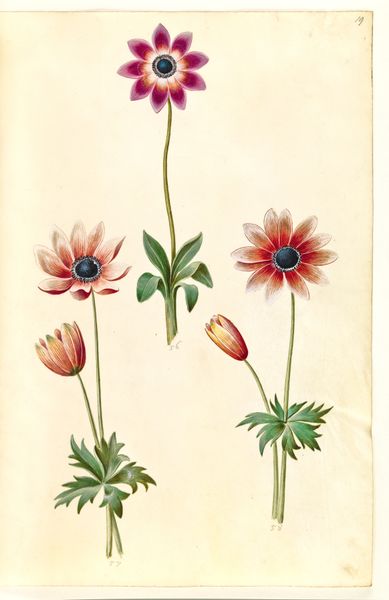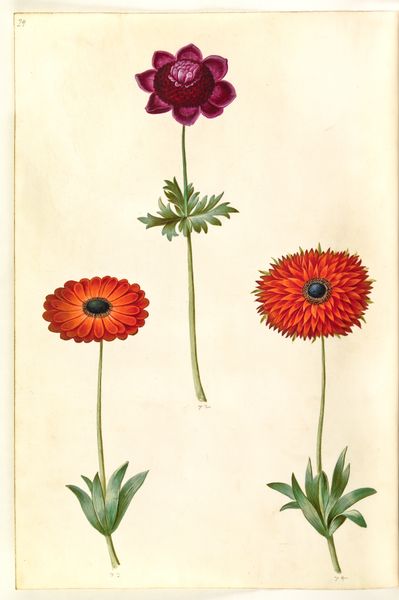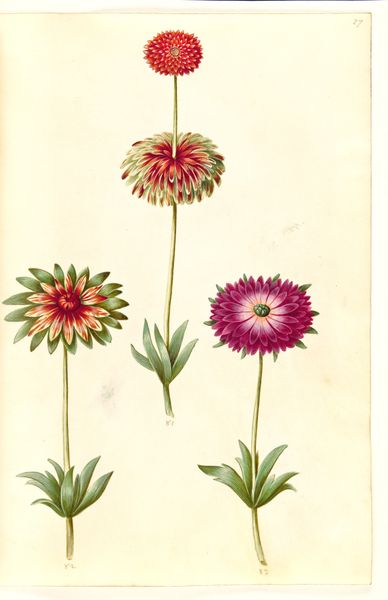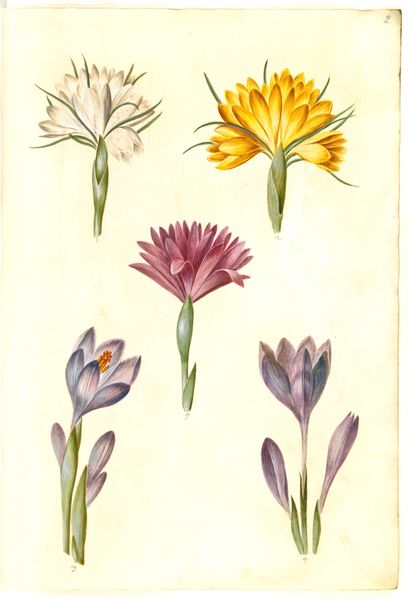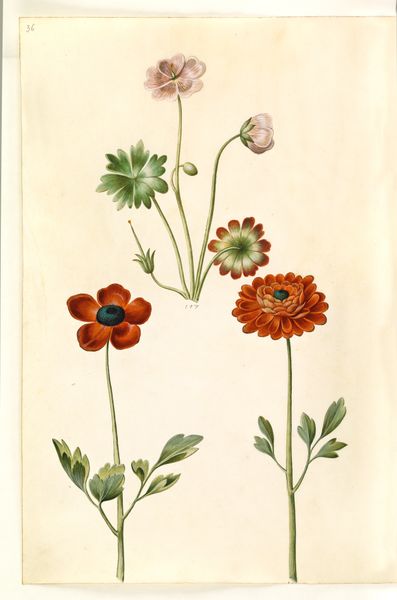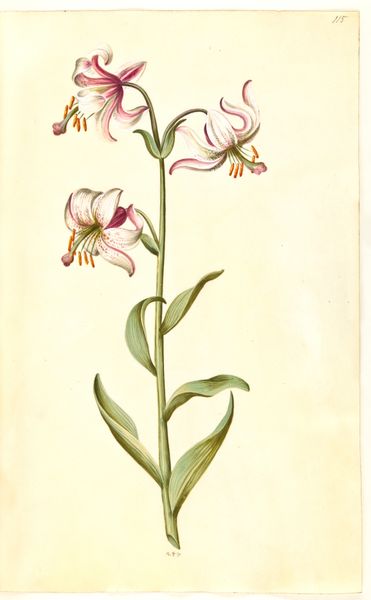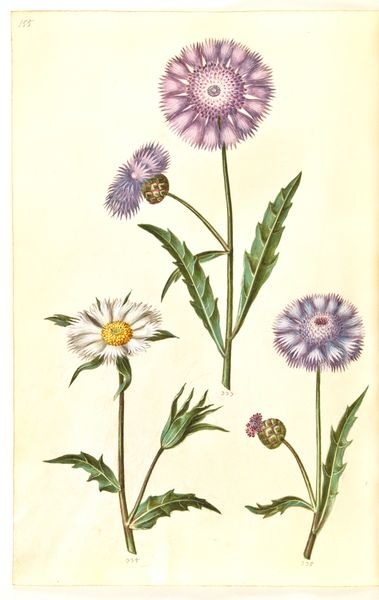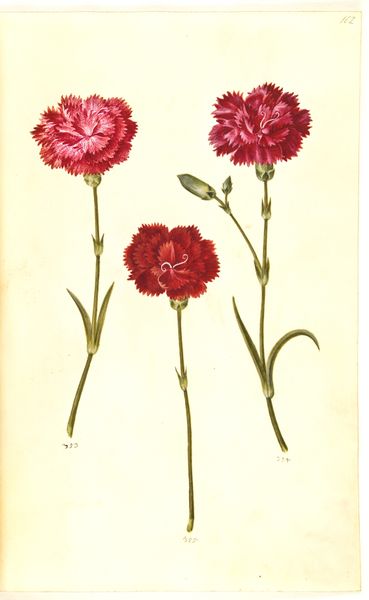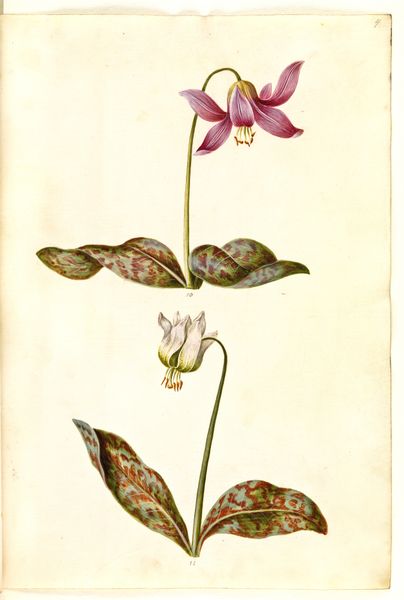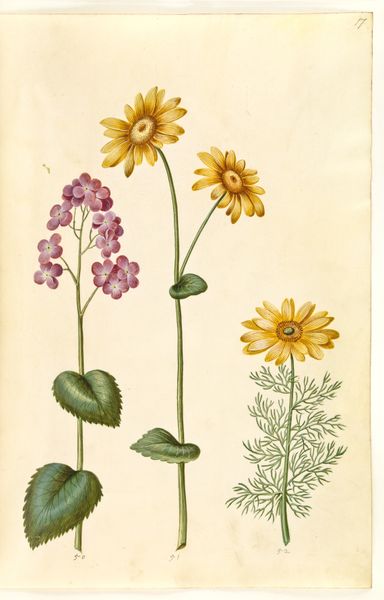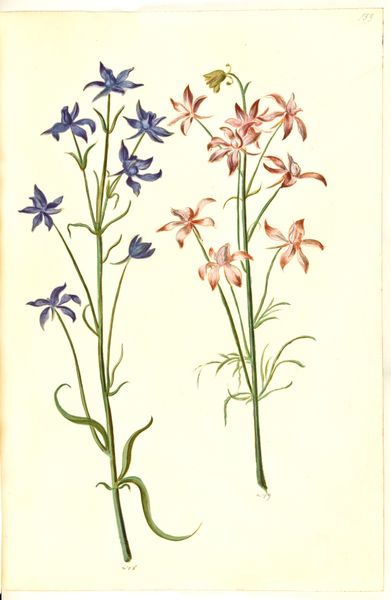
drawing, gouache
#
drawing
#
gouache
#
northern-renaissance
#
botanical art
Dimensions: 375 mm (height) x 265 mm (width) x 85 mm (depth) (monteringsmaal), 358 mm (height) x 250 mm (width) (bladmaal)
Hans Simon Holtzbecker made this botanical study of Anemone pavonina, or peacock anemone, in the 17th century. Holtzbecker’s watercolour, now housed in the Statens Museum for Kunst in Denmark, invites us to consider the cultural and institutional contexts that shaped artistic production in this era. Floral still lifes were, of course, very popular in the Netherlands at this time. But their social and cultural significance is often overlooked. The Dutch Republic was then a world leader in trade, commerce, and botany. Anemone pavonina would have been an exotic and expensive commodity, collected in gardens, traded, and collected as specimens. Its likeness was also collected as images. Holtzbecker’s watercolor both reflects and reinforces this dynamic. It speaks to a cultural and institutional system that was fascinated by the natural world but also sought to control and profit from it. To understand it better, we could look at the economic history of tulip mania, or the patronage of botanical art.
Comments
No comments
Be the first to comment and join the conversation on the ultimate creative platform.
